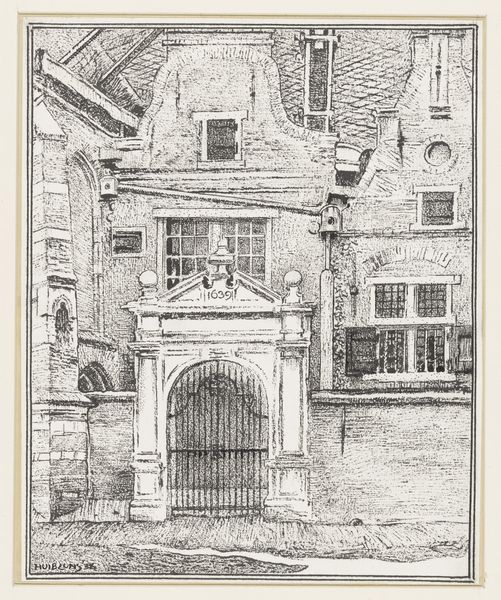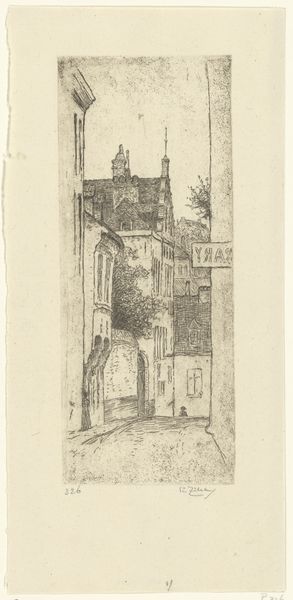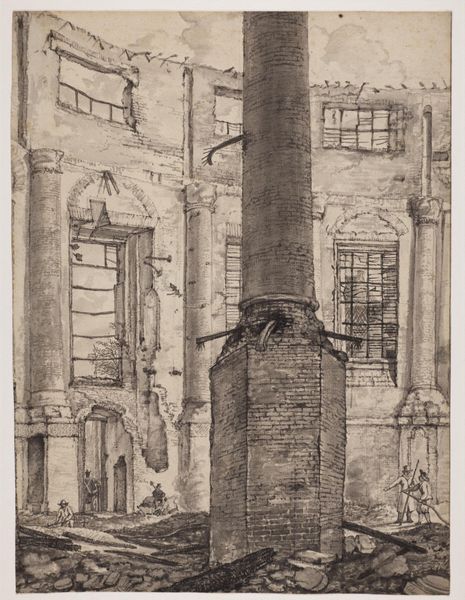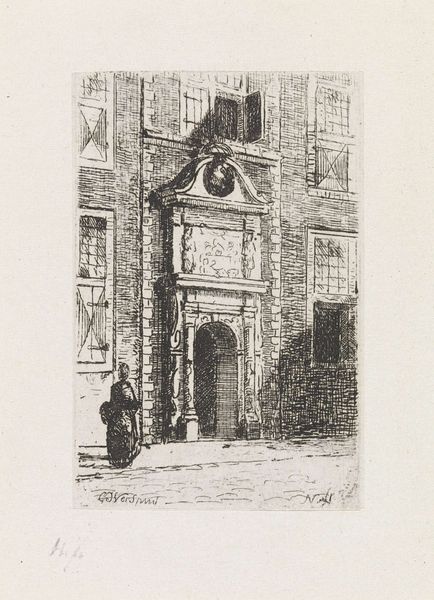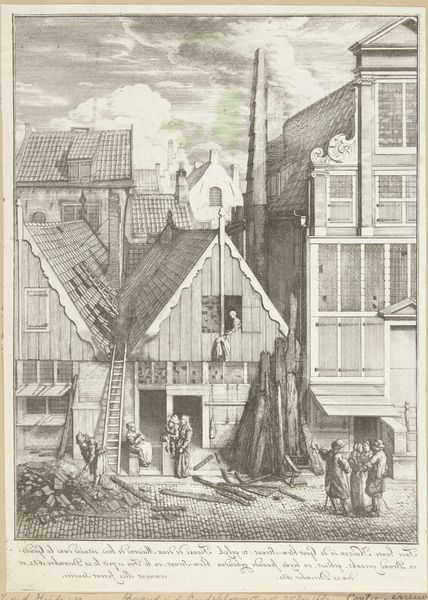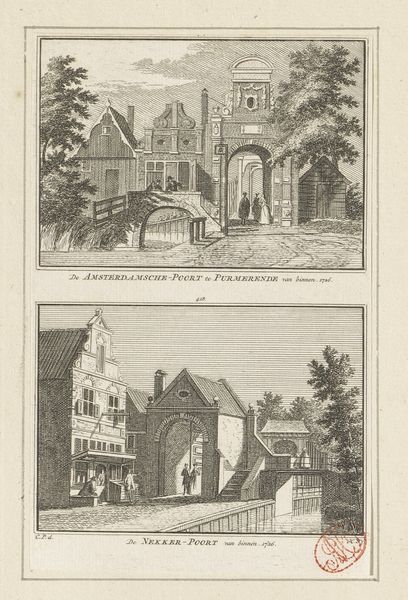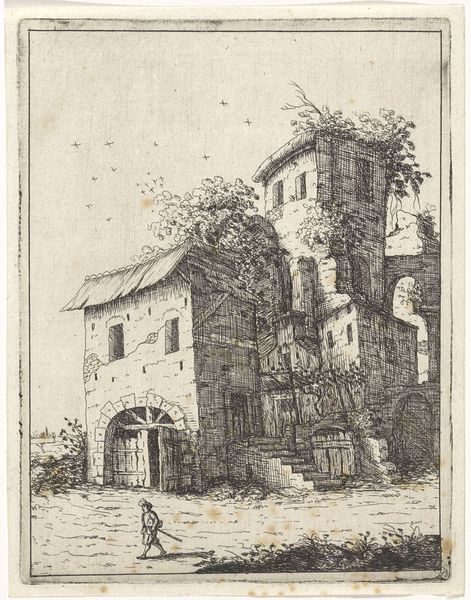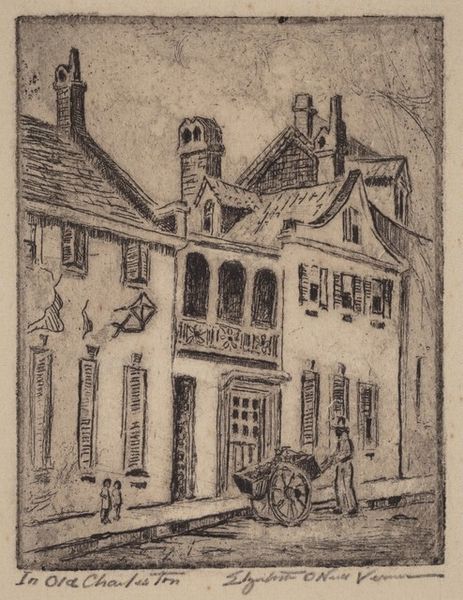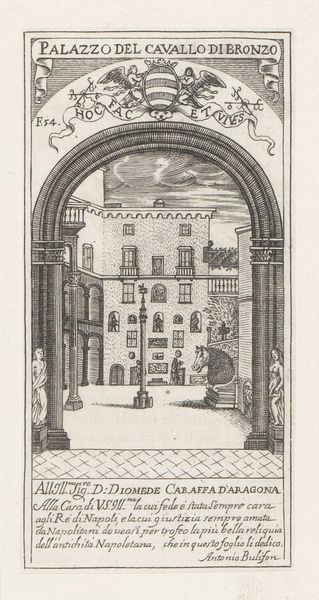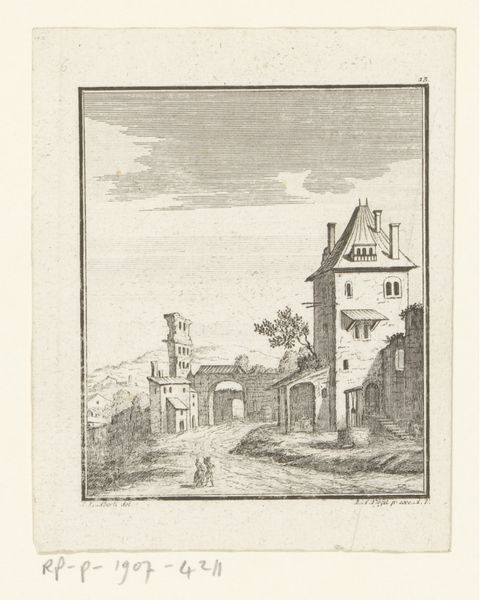
drawing, paper, ink
#
drawing
#
paper
#
ink line art
#
ink
#
cityscape
#
realism
Dimensions: height 313 mm, width 256 mm
Copyright: Rijks Museum: Open Domain
Curator: Let’s discuss this drawing by Huib Luns, made in 1938. It's entitled "Portaal van de Sint-Gommaruskerk te Enkhuizen," which translates to "Portal of the Saint Gommarus Church in Enkhuizen." Luns rendered it meticulously in ink on paper. Editor: It evokes a hushed atmosphere, almost like stepping back in time. The high contrast and sharp lines create a powerful sense of depth. The lines create a striking compositional pattern that is very compelling. Curator: Luns was working within a very specific tradition. Cityscapes of this nature were immensely popular in the Netherlands at this time, reflecting both civic pride and an interest in the interplay of architecture and public life. The choice of ink as a medium is telling; its linearity emphasizing the precision with which he captures the architecture. Editor: The repetition of rectangular forms – the windows, the brickwork – generates a grid-like structure, an interplay between the facade of the church and adjacent building. The artist has used tonal gradations and light to convey not only architectural reality but also depth and distance. There is a tangible geometry within this drawing that makes it quite pleasing. Curator: I think your comments regarding the geometry, bring up interesting aspects of Luns’s intention. Consider that during this period the Netherlands was facing complex social and political changes leading up to the war. This seemingly innocuous depiction of a church portal subtly emphasizes stability and enduring traditions in the face of modernity. Churches often function as public spaces of assembly and activism; one can only imagine how a space such as the portal of this church functioned in the imagination of people facing conflict at the time. Editor: So, we could say that its aesthetic, rooted in detailed realism, functions to underscore civic values when, in reality, it might mask contemporary realities. Well, regardless of whether this artistic choice was intended or accidental, this small drawing demonstrates that powerful visual language has much to contribute, beyond representation, in a work of art. Curator: I concur entirely. Thank you, that brings some excellent and novel considerations. Editor: It’s been a pleasure exploring this piece with you.
Comments
No comments
Be the first to comment and join the conversation on the ultimate creative platform.

